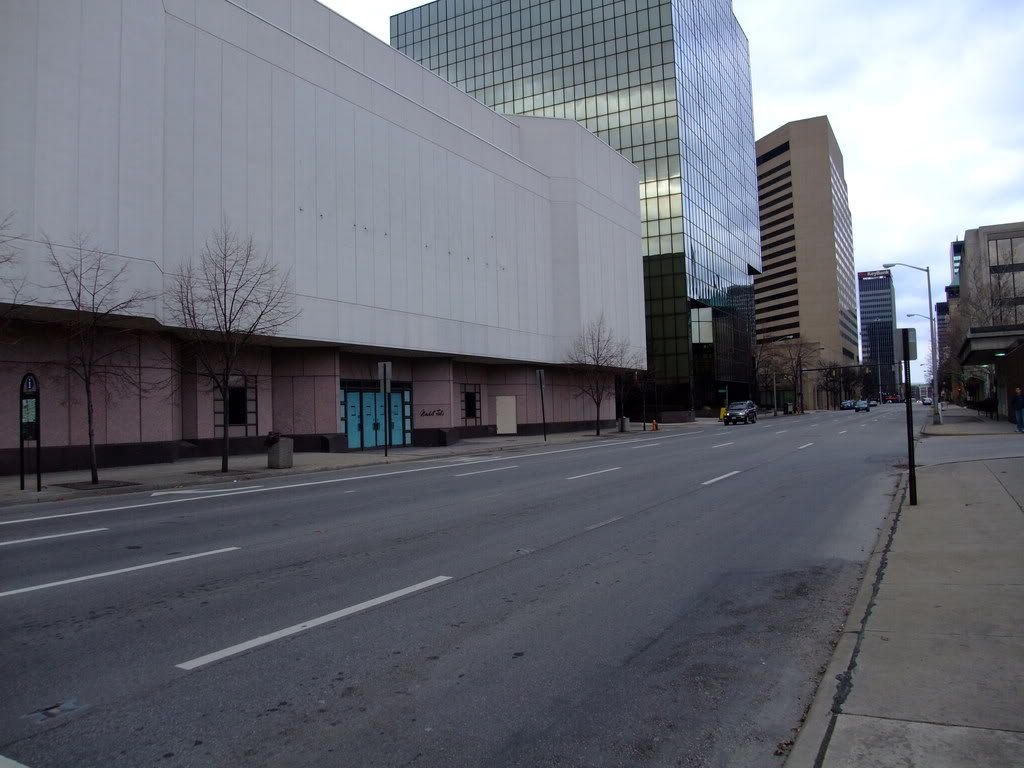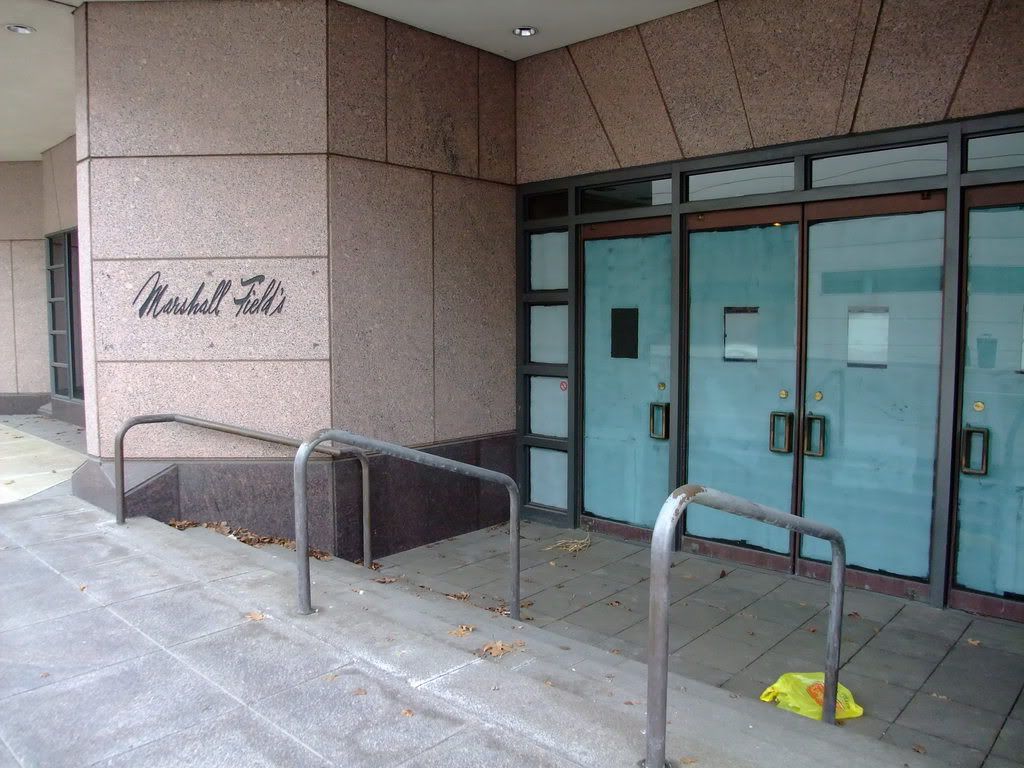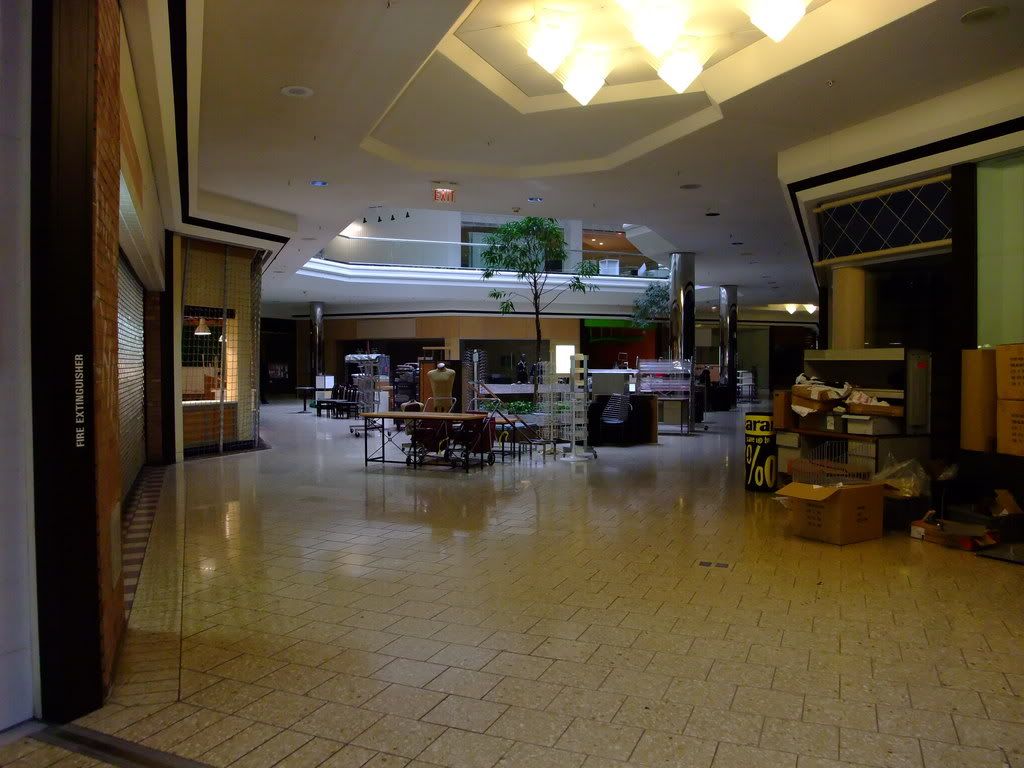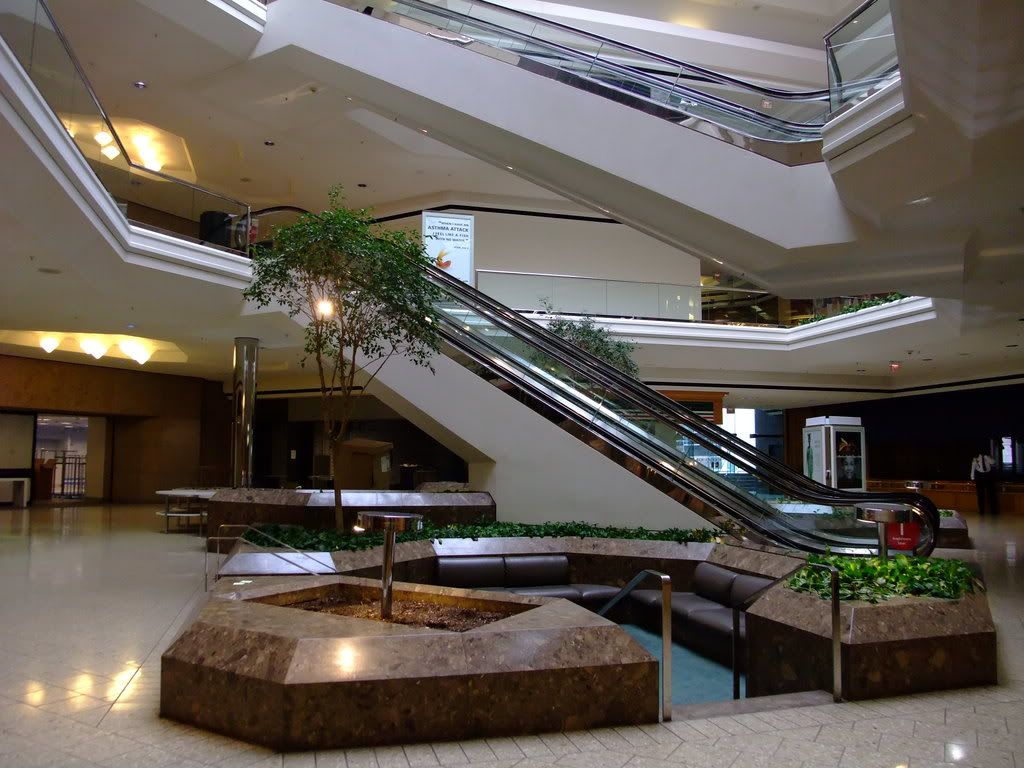The city of Columbus, Ohio is planning to demolish City Center, its struggling downtown shopping mall, and replace it with a park.
Downtown retail has always been one item that smaller cities struggled to get right. Even Chicago had many years of vacancy problems along its traditional State St. corridor and only turned it around after a massive urban core boom and significant investments of public dollars. Even today, the Chicago Place Mall on Michigan Ave is dead, with nothing much left of the tenant base beyond Saks Fifth Avenue.
Columbus, like other cities, had a proud downtown department store tradition. Lazarus, which grew into a significant Midwest regional chain, had originated there. Its downtown flagship store laid claim to a series of retail firsts, including the first air conditioned store. But as with other cities, Columbus saw its downtown department stores and specialty shops lose their allure as people and jobs decamped for the suburbs and retail followed.
Their approach to try to reverse this decline was to conceive of a downtown version of the enclosed regional shopping mall. The idea dated back to 1977, but the 1.3 million square foot City Center Mall did wasn't complete until 1989, when it opened at a cost of $116 million. Chicago's famed Marshall Field's was the main anchor and the mall enjoyed initial success and high occupancy. Things took a turn for the worse when the mall was the site of the 1994 murder of a teenager, a killing described as gang related. Declined continued over the next decade plus until this year, when the city took over the mall, only a few stores remained.
What went wrong with City Center? And what lessons does it teach us? Plenty went wrong. In retrospect the surprise should not be that City Center failed, but that it lasted as long as it did. Among its problems:
* City Center was an enclosed, inward facing mall design. In effect, it was a suburban mall plopped down on city streets. This shows the type of thinking that was common in the past - and is alas still too common now - that what downtowns needed to compete with the suburbs was a similar environment because the move of people to the suburbs showed a consumer preference for that form. This is almost always a horrible mistake. Given the choice between a real suburb and a downtown trying to act like one, only with higher taxes, more crime, and worse schools, it doesn't take a genius to figure out which one is going to win.
* The city tried to lead with retail, when significant retail is probably the last element you need to put in place since it is so difficult to make work in a downtown setting. Think about it. Offices generate shopping traffic principally at lunch hour or maybe right after work. Downtown Columbus has an extremely thin population. And there aren't hordes of tourists like in Chicago. So who is going to shop there? This mall was heavily dependent on the suburbanite coming downtown as a shopping destination, much moreso than other malls.
* Speaking of which, Columbus built its malls relative late. Upscale malls like Tuttle Crossing, Polaris Fashion Place, and Easton Town Center were opened after City Center. This meant that downtown had an older and less attractive mall versus the suburbs. Again, which one will win in that situation? Not hard to figure it out.
* Marshall Fields never established the true flagship store concept, and downtown generally lacked a unique retailer that would end up drawing people despite the inconvenience. Contrast to say Saks Fifth Avenue in downtown Cincinnati.
* City Center's problems were also partially caused by the regional mall as a format falling out of favor. Is anyone building new enclosed malls anymore? I don't think so. We've seen a rapid innovation in new retail formats, the most recent of which is the "lifestyle center". This renders enclosed malls yesterday's news. In fact, we observe even genuine suburban malls across the country struggling and being redeveloped or demolished to deal with this.
* Columbus also had the unique problem of siting its mall in the wrong place. The logical place for a shopping center today would be the Arena District, where you have the convention center, the arena, the restaurants, and the proximity to the Short North. When I walked around City Center, the south side of downtown was a ghost town. If you want to have downtown retail survive, it has to be the center of the action, it can't be the thing you are expecting to draw the action.
Add this all up and the headwinds were insurmountable for City Center. The current plan is to spend $15-20 million to demolish the mall (excluding the parking garages) to build a park, and then try to encourage another $150 million of development on the park's edges, anchored by 400,000 square feet of office space and 70,000 square feet of retail and restaurant space along High St. Here are some renderings:
These look very nice. The problem is that the vision is unlikely to be realized. Why? Look at these pictures and what do you see? People - lots of them. But where are those people going to come from? 400,000 sq. ft. of office space will only put a few people there for lunch on a nice day. 70,000 sq. ft. of storefront retail won't draw significant numbers either. This is a park that is likely to be deserted most of the time.
There seems to be a reverence for green space in cities bordering on the religious. But green space is only useful to the extent that it functions well in the urban fabric. If you take two blocks and grass them over like this, what you are really doing is just institutionalizing a vacant lot. Now a plaza or square of the European style is quite nice, but it is quite nice because those places are able to draw people. If 1.3 million sq. ft. of shops wouldn't draw people, why will this park? That's the great unanswered question. Plazas work in Europe because of the density of offices, retail, residential, and tourists. The activity on the plazas draws more people to be part of it, which forms a virtuous circle, but unless there is critical mass of activity to begin with, the spark will never strike. The intensity of development here is just not going to make it. In effect, this is another build it and they will come plan. What's more, the city is permanently taking the land off the tax rolls and since, unlike a mall, it's a non-revenue producing asset, there is a significant operating tail to fund as well.
City officials are correct that cities have to get their public spaces right. But the key part of a public space is the public. If you don't have people, you haven't built a true public space. I suspect that they will be forced to program events there near continuously to fill up this space.
A downtown park on this spot might not be a bad idea for temporary land banking. But from what I've seen elsewhere, the minute there is grass on something, activists will jump out of the woodwork to protest anything being built on it.
I'd challenge Columbus to put their thinking caps back on and try to come up with something more creative. Frankly, that site is probably only developable successfully once there has already been other development occur in the area. I am not familiar enough with downtown Columbus to give specific recommendations, but I do think this plan has significant risk and may ultimately end up, like the mall before it, a project that in retrospect had little chance of achieving significant success.














